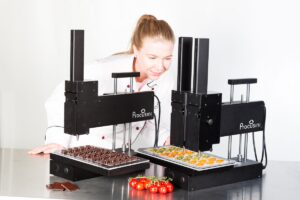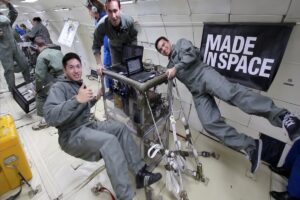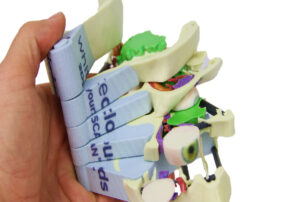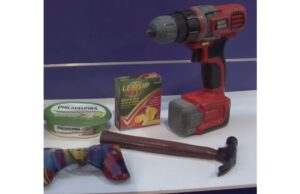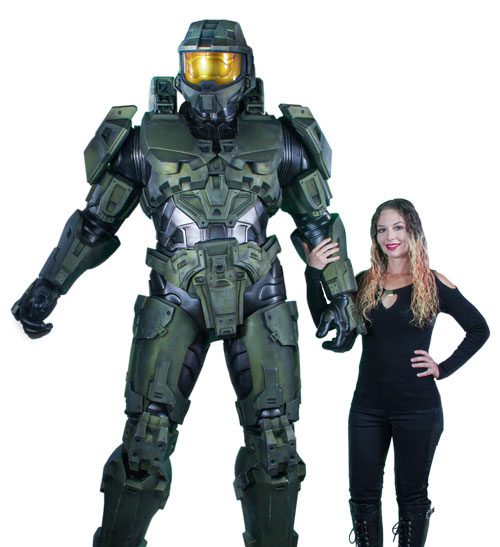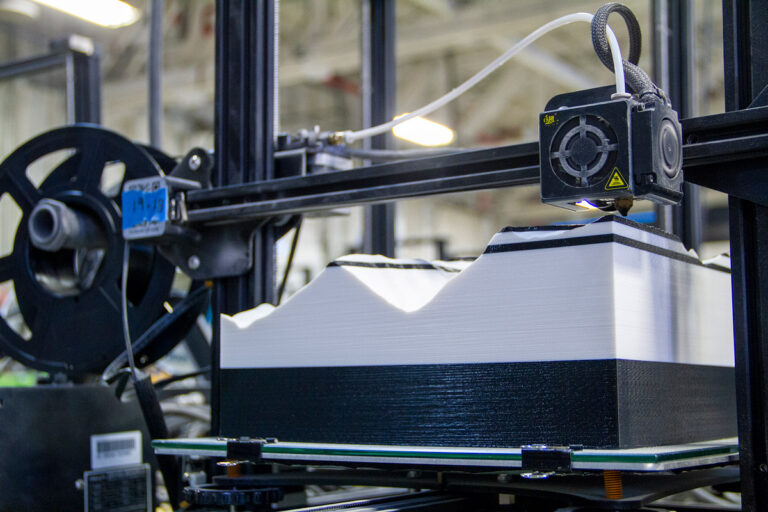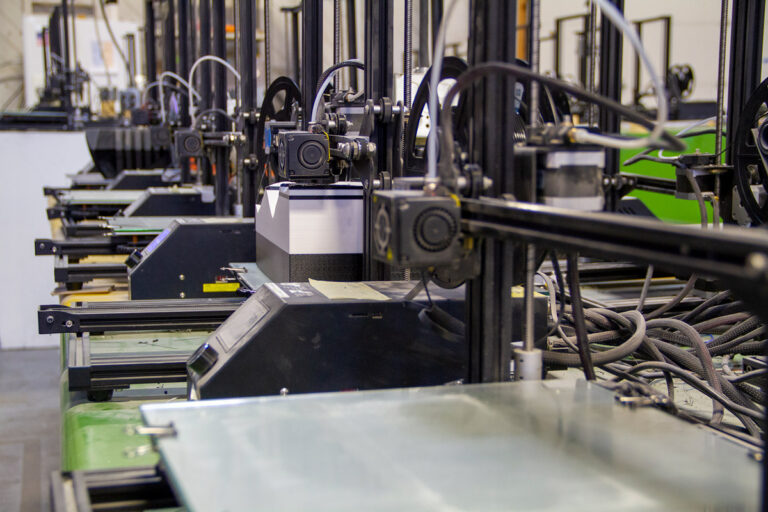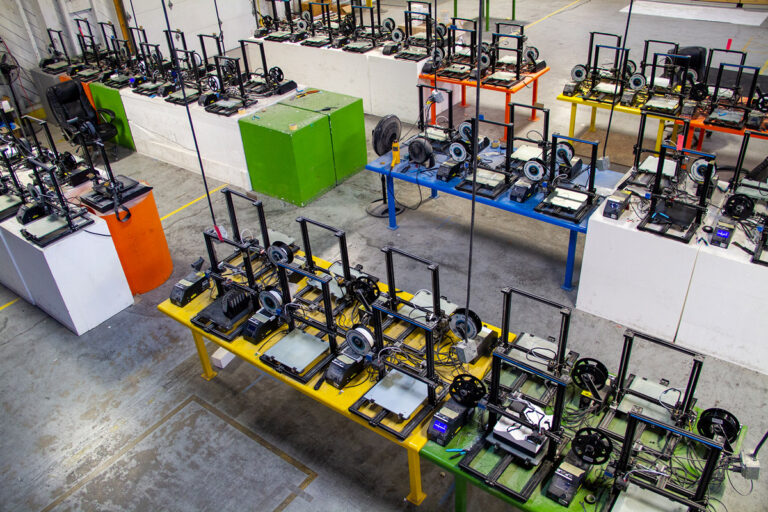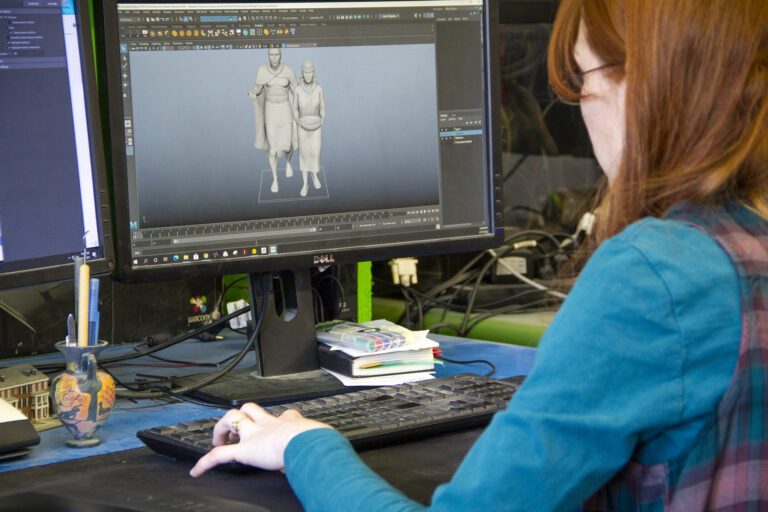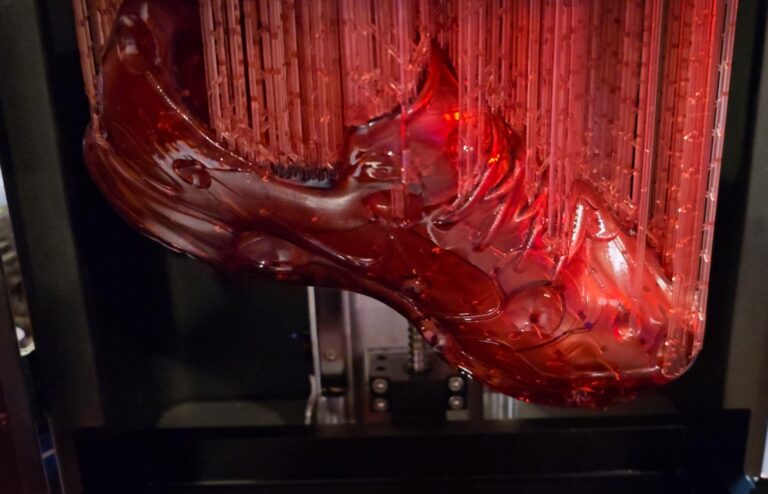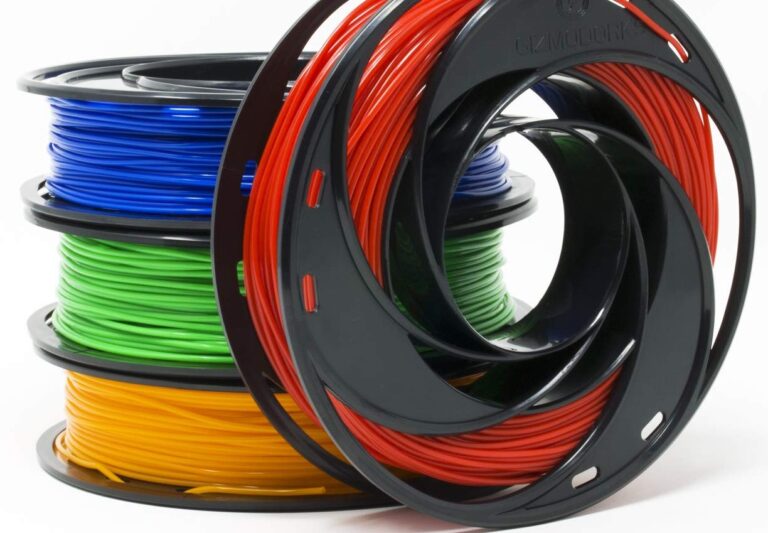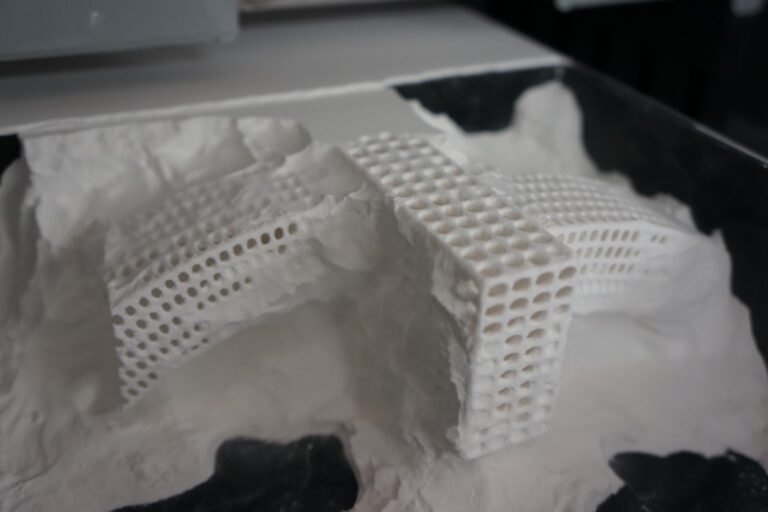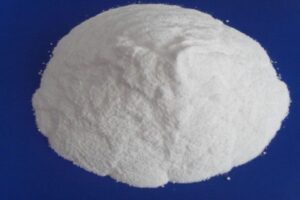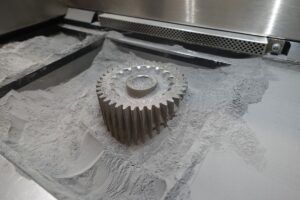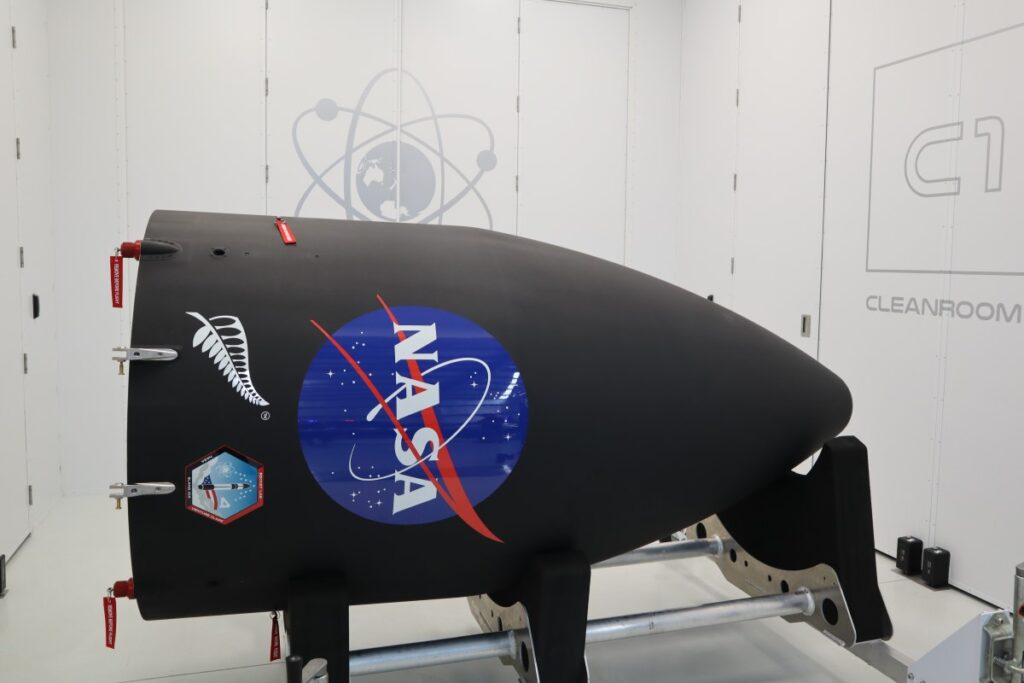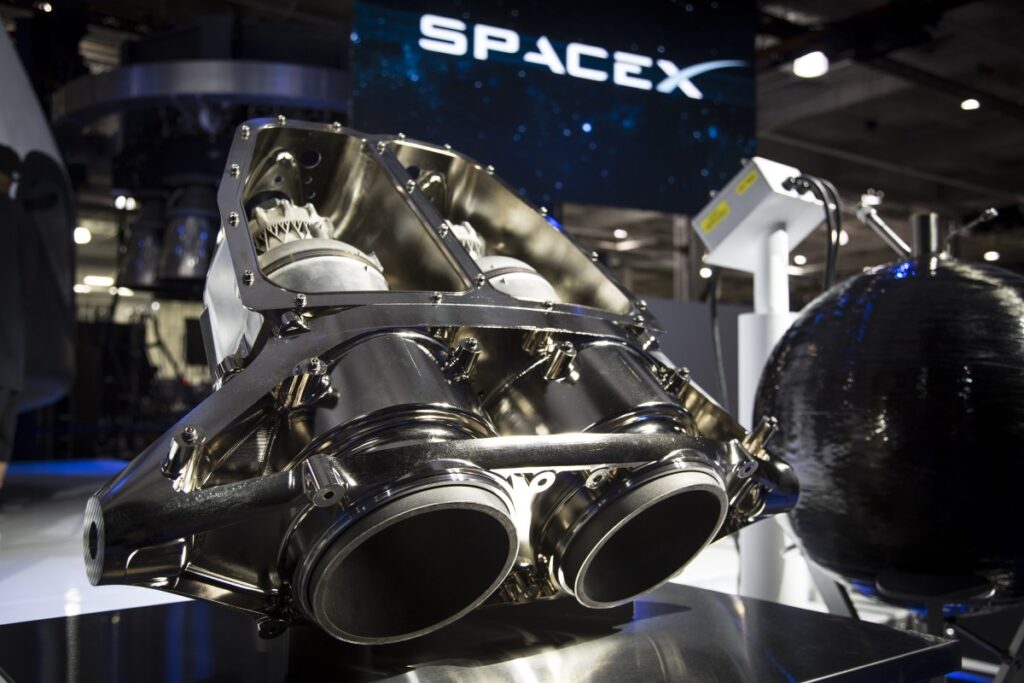3D Printing
3D Printing
We 3D Print Custom Models & Displays for Trade Shows, Signage, Museums, Architecture, Entertainment, Healthcare, Home Decor and many other industries.
We 3D Print Custom Models, Props & Displays
Table of Contents
3D Printing Tradition + Technology
WhiteClouds uses 3D printing technologies to fabricate custom models such as dioramas, architectural and industrial models, cartoon and character models, 3D art and prototypes.
This technology is used in many industries to enhance the user experience and innovative product development continues to push past boundaries. For example: aerospace, automotive, architecture, dental, education, entertainment, fashion, footwear, healthcare, and jewelry. The creative industry is also using this technology to create 3D art that is showcased in homes, offices and galleries. 3D printing is also combined with other technologies to create awesome models for whimsical props located in museums and trade shows all over the world.
What is 3D printing?
3D printing is also known as additive manufacturing. This process adds material layer by layer to form a three-dimensional object. You can create complex, detailed shapes using much less material than with the other manufacturing processes. Traditionally, parts have been made by CNC machining (subtractive), injection molding (formative) and casting manufacturing technologies. Bioprinting is different than 3D printing. It uses bioprinters to print liquid and gel-based material which is used for tissue and organ transplants.
How Does 3D Printing Work?
3D printing starts with a digital model of an object, prototype, part, or model that is usually created with a 3D modeling software like AutoCAD, Maya, and ZBrush. Some drawings can be converted to digital with a 3D scanner, app or code. Then it goes through a process called slicing that divides the 3D model into hundreds or thousands of horizontal layers. Once it’s sliced, its transferred via USB, SD or internet to a 3D printer to be 3D printed using a variety of materials including sandstone-like, digital plastic and UV-cured resin to complete the desired object. We take a look at some of the top industrial 3D printers in our updated 3D printers guide.
There are many 3D printing processes to choose from and some materials are better suited to certain applications. So keep that in mind as you design your product or part.
This technology is used in many industries to enhance the user experience and innovative product development continues to push past boundaries. For example: aerospace, automotive, architecture, dental, education, entertainment, fashion, footwear, healthcare, and jewelry. The creative industry is also using this technology to create 3D art that is showcased in homes, offices and galleries. 3D printing is also combined with other technologies to create awesome models for whimsical selfie backgrounds located in pop-up museums all over the world.
3D Printing Processes
3D printing is an umbrella term for several different technologies. Each one uses many kinds of materials and produces different results. The process you choose will be determined by the end-product, prototype or model you want to print. The video below shows different types of 3D printers and the related technologies.
Fused Deposition Modeling – FDM is a 3D printing process that can be achieved with desktop and large-scale 3D printers. FDM melts plastic filament and lays it down onto a platform through a nozzle (like a fine-tip glue gun) one layer at a time in a predetermined location. Multiple passes are needed as each layer can be as thin as a human hair. Once a layer is complete, the build platform moves down or the extrusion head moves up and a new layer is laid down. The process repeats until the part is complete. 3D printing service bureaus will charge approximately $0.05 – $0.50 per cm3 for consumables. FDM 3D printers cost anywhere from $500 to $250,000.
Color Jet Printing – CJP is a process where layers of gypsum powder are bonded to form an object. Glue or binder is sprayed from the print head and binds the layers together. A fresh layer of powder is spread across the top and the process is repeated until the object is fully printed. The powder allow for the creation of unsupported parts. There are 750,000 possible colors to print. It has a sandstone feel and there are many finishes available. These include wax, matt, leather-like, glossy and hard gloss. 3D printing service bureaus will charge approximately $0.50 – $1.25 per cm3 for consumables.
3D Systems’ ProJet CJP x60 3D printers are very versatile and are great for educational and commercial environments. They are capable of full-color 3D printing and exceptional print speeds. These printers are in the $50,000 to $100,000 price range.
Direct Metal Laser Sintering – DMLS uses lasers to melt metal powders. It’s used to 3D print everything from prototypes to end-products. Steel, titanium, nickel, aluminum, and cobalt-chrome are popular metals in DMLS. Stratasys, EOS and 3D Systems produce high-quality DMLS 3D printers. These printers range in price from $600,000 to $1,500,000. 3D printing service bureaus will charge approximately $20 – $100 per cm3 for consumables.
Markforged is a newcomer to the low-cost 3D printing industry. 3D printed parts on their MetalX printer can be built at substantial savings versus machined parts. These 3D metal printers have a price tag under $100,000.
Selective Laser Sintering – SLS uses lasers to melt multiple layers of nylon powder to build unsupported parts. You can sinter multiple parts at the same time in a process called nesting. It’s more porous and can be dyed in multiple colors. EOS is one of the leadering manufacturers of 3D SLS printers and they cost between $250,000 to $1,000,000. 3D printing service bureaus will charge approximately $1.50 – $3.50 per cm3 for consumables.
Stereolithography apparatus – SLA creates printed objects from liquids that are hardened by light sources. This process is used for highly accurate parts with smooth finishes. 3D Systems’ ProX 800 is a highly efficient stereolithography 3D printer. It uses a broad range of materials to build large concept models, smooth-surfaced prototypes, and small parts with speed and precision. SLA 3D printing machines typically cost $3,000 – $1,000,000. 3D printing service bureaus will charge approximately $2.00 – $4.50 per cm3 for consumables.
Continuous Liquid Interface Production – CLIP harnesses light and oxygen in a resin bath to create smooth-sided objects and is an extremely fast 3D printing technology. Companies like Adidas and Ford Motor Company use CARBON 3D printers. Its technology is also used for medical applications. This 3D printing technology costs approximately $40,000 per printer, per year (not including operating costs and materials).
Jet Fusion is like the stereolithography 3D printing process. However, instead of using a laser to cure the layers, tiny droplets of the polymer are dropped to shape each layer of the product. It uses nylon-based materials to build functional end-use parts that are solid and super smooth making it very economical. If you’re looking to purchase a Jet Fusion 3D printer, they range in price from $130,000 to $200,000.
Digital Light Processing – DLP is also known as 3D printing and stereolithography. This type of 3D printing uses a DLP projector to display an image onto a vat of liquid polymer. As the build plate moves down the liquid polymer is exposed to UV light. The exposed liquid polymer hardens. The process repeats until the vat is empty and the 3D model is complete. DLP is fast and prints with higher resolution than other types of 3D printing. This process is known as photopolymerization. DLP printers generally cost $1,500 to $20,000.
MultiJet Printing – MJP uses piezo printhead technology to deposit photocurable plastic resin or casting wax materials layer by layer and is used to build a wide range of parts, patterns and molds. The MJP printers are great for a variety of miniatures, jewelry making, dental, medical and aerospace applications. Some of the advantages in using this technology are time, labor and cost savings with a high-quality, highly-detailed result. Printers like the ProJet MJP 2500W by 3D Systems start at $43,000. 3D printing service bureaus will charge approximately $2.50 – $4.50 per cm3 for consumables.
PolyJet Printing is similar to inkjet printing but instead of jetting drops of ink, PolyJet printers jet layers of ultraviolet curable liquid photopolymer onto a build tray. This technology builds models and products in a huge variety of materials and colors. Products built with PolyJet printing are flexible, strong, rigid, clear or colorful. They can be heat-resistant and durable. Film, fashion, automotive, industrial and healthcare industries use this technology. High-end machines like the Connex series 3D Printer by Stratasys start out at $150,000. 3D printing service bureaus will charge approximately $2.50 – $4.50 per cm3 for consumables.
3D Printing Materials
Ever wondered what your insoles or the clasp on your bike helmet were made of? It’s amazing to take a look at what materials are used in 3D printing also known as additive manufacturing. The most common materials are filament, polymer powder, resin, and metal. With today’s technology, they also include bioink which is used to 3D print tissue for organ replacement. The possibilities are limitless when it comes to what these materials can be used for. One thing to remember when purchasing consumables, even though you can buy consumables from many sources, many manufacturers will void your warranty if you don’t buy the consumables directly from the manufacturer or through an authorized reseller.
MoldLAY is a wax-like filament that enables FDM printers to produce mold castings. Depending on the printer you use, it’s also available in a resin form. If you’re using a material jetting 3D printer, tanks are used to heat the wax for printing. Material jetting is the optimal way to print with wax and is especially useful for jewelry makers. Rolls of MoldLAY cost between $35 and $70.
3D Printing Applications
The sky’s the limit when it comes to 3D printing applications today. People all over the world in all industries benefit from 3D printed parts and consumer goods. Some of the industries using 3D printing are discussed below.
Aerospace
The aerospace industry primarily uses 3D metal printing to build organic designs using lighter alloys that provide strength and durability. Current applications include concept models and prototypes, complex aerospace parts, replacement parts, and specialized parts for space exploration.
Additive manufacturing uses the following technologies – polymer powder bed fusion, thermoplastic filament extrusion systems, metal powder bed fusion and directed energy deposition systems combined with high-performance materials to build advanced parts for general and commercial aviation.
Rocket Lab has successfully 3D printed 100 Rutherford engines, the world’s first 3D printed, electric turbo-pump-fed engine (see image below -left). NASA is also increasing its research to examine new and better ways to build and power aircraft in the future through its University Leadership Initiative. SpaceX’s Crew Dragon spacecraft with 3D printed SuperDraco engine is now officially flying.
Architecture
Architectural models are ideal for communicating and collaborating with builders, home owners, investors and community leaders. These highly-detailed models are used in the planning, fundraising, design, construction, marketing and sales process of homes and offices, hotels and retail spaces, government and medical buildings, and many more.
3D Art
3D printed art uses all materials and all 3D printing technologies to create stunning and elegant pieces of art to display in homes, offices, parks, and galleries worldwide. From the installation “Concrete Choreography” (3D printed concrete columns) to intricate light fixtures and wall art to sculptures and interactive lighting displays, 3D printing is enabling the creation of many beautiful works of 3D art.
Automotive
3D printing for the automotive industry is not just for prototypes. It’s being used to build car parts for many makes and models allowing cost and time reduction benefits for manufacturers. Parts like brake calipers to small motor brackets with integrated water cooling for the Bugatti Chiron supercar, (a subsidiary of Volkswagen); the Divergent Blade, a two-seat supercar – that boasts 720 hp and is super lightweight; and research and development of new parts for every major automotive manufacturer. The U.S. Army has been using additive manufacturing for the last twenty years to refurbish worn parts and create custom tools. Going forward, they’re working with 3D Systems to create state-of-the-art 3D printers that will provide large scale precision parts and enable more efficient production of long-term durable parts all while reducing material usage. Some of the top 3D printers used for the automotive industry are the DMP Factory 500, the DMP Factory 350 and the DMP Flex 350.
Architecture
Architectural models are ideal for communicating and collaborating with builders, home owners, investors and community leaders. These highly-detailed models are used in the planning, fundraising, design, construction, marketing and sales process of homes and offices, hotels and retail spaces, government and medical buildings, and many more.
Dental
The machines used to 3D print transparent braces are generally the size of a microwave oven and start out at $400 to more than $500,000. They extrude layer upon layer of plastics or other materials, including metal, to create 3-D objects with moving parts. Sales are booming and five million patients have gotten these clear aligners over the past 20 years. Invisalign, a San Jose company, uses 3-D printing to make each mouthful of customized, transparent braces.
The cost of these clear aligners is between $3,000 and $8,000 each. Total sales for the company in 2017 were $1.47 billion and until now there hasn’t been much competition.
With patents recently expired, other companies like 3M are also interested in manufacturing clear aligners once its clinical trials are completed in 2019. SmileDirectClub is another new-comer to the industry and in their startup campaign raised $60 million.
Recently, RegenHU (a Swiss company which stands for regeneration human) has spun off a company called Vivos Dental which will market their dental bone product called OsteoFlux®. It is a 3D printed synthetic, osteoconductive biomaterial made of calcium phosphates chemically comparable to human bone. It provides a stable scaffold that supports the overlying soft tissues and is a template for osteoconduction for large bone augmentation.
Healthcare
Advances in modern technology provide many applications for 3D printing technology to benefit the healthcare industry. These include hearing aids, medical models, implants, prostheses, dental aligners, orthotics, splints, casts and braces. One of the biggest benefits is that each model is customized to the precise anatomy and needs of one person – “Patient-Specific” healthcare.
Hearing Aids
3D printing has shortened the hearing aid manufacturing process from more than a week making one at a time by hand to three simple steps: scanning, modeling and printing. Hearing aids are made layer by layer of light-curing acrylic resin. Hundreds of thousands of custom-made products are manufactured every year. The audiologist scans the patient’s ear using a 3D scanner and lasers to create an ear impression. Most scanners create about 100,000 to 150,000 points of reference using digital cameras. The scan is then sent to the modeler who shapes the impression by applying templates and geometric shapes to the impression. Once that’s complete, the model is sent to the 3D printer and is built using resin and then fitted with the necessary electronics and acoustic vents. Each hearing aid is fine-tuned to the level of hearing loss of the patient.
Most hearing aids are made using stereolithography (SLA) printers but there is a small percentage that requires hands-on manufacturing due to medical reasons. 3D printers like EnvisionTEC can print 65 hearing aid shells or 47 hearing aid molds in 60-90 minutes.
Cosmetic Surgery Models
3D printed cosmetic surgery models allow patients to see what they will look like once the cosmetic surgery is complete. The benefits of these models include assisting the doctors with marketing and branding, facilitating conversations with patients to understand what they’re thinking, designing a patient-specific plan and enabling better execution of patient-specific plans during surgery. Carrie S. Stern founded MirorMe3D to bring 3D printing to cosmetic surgery. They offer products to surgeons and patients including full face, facial subunit (i.e. nose) and breast models. Baseline units are used in the consultation to educate patients on the goals and expectations of surgery and as a reference for intraoperative guidance.
These models are created by creating a 3D scan of the face and then editing it with a 3D editing program to modify the scan to create an image of what the patient’s appearance would be after surgery. Then the image is sent to a ProJet CJP 660Pro and printed in color using color jet printing technology. After the excess powder is vacuumed off, the mask is thoroughly cleaned and fixed in a solution bath.
Braces, Splints and Casts
With today’s 3D printing technology, braces can be custom-built for patients and provide more stability for injured limbs, neck and back injuries and support the spine for those with scoliosis. WhiteClouds was commissioned to build a brace flexible enough for Thomas Davis, a linebacker for the Carolina Panthers, to wear during Super Bowl 50 that would protect his broken arm and prevent further injury. This brace is made from plastic and rubber materials, with a spongey interior to absorb shock and it’s super lightweight.
Patient-specific splints, casts and orthotics can also be built with this technology. 3D printed exoskeletal casts provide the support needed to allow broken bones to heal properly. They’re lightweight, recyclable, ventilated and you can even get them wet.
Prosthetics
3D printing is changing the face of medicine with innovative custom-fit 3D-printed prosthetics. Amputations occur multiple times per day and are life-altering. By having access to 3D printed prosthetics, amputees benefit in many ways. This innovative technology is more affordable than traditional prosthetics. The expense is generally out of pocket rather than covered by insurance and costs between $1,000 and $8,000. Whereas, inexpensive versions can be built for less than $100.
Using 3D printing to build custom-fit prosthetics to keep up with the rapid growth of children, makes it less taxing on a family’s budget. Amputees have more mobility and can resume most of their regular activities in a short amount of time. 3D printed prosthetics are not only functional, they’re beautiful and can be designed to express the patient’s character.
This technology isn’t just for humans. 3D printed prosthetic limbs benefit animals of all shapes and sizes. Penguins, ducks, eagles, horses, cats, dogs, chickens, and pigs just to name a few are able to survive and thrive with comfortable, custom-fit limbs and beaks.
Customized Implants
Implants and prostheses and associated molds/castings can be 3D printed in shapes and sizes through translation of patient-specific MRI and CT scans. There are made-to-order jigs and fixtures that are used with 3D printed implants. The speed of implant production can be produced very quickly and custom implants can have positive impact in terms of time required for surgery and patient recovery time. Each implant is biocompatible.
Medical Models
Medical models are unique to the patient. They’re created with extreme detail captured from individual MRI and CT scans to provide a hands-on perspective in patient treatment and care. These models are 3D printed with full-color segmentation which facilitates successful patient education, medical staff training and surgical planning for physicians. The main challenge is who’s going to pay for the medical models needed.
The main challenge with medical models is until insurance reimbursement becomes common, the question of who’s going to pay for the medical models needed remains an issue.
Surgical Guides and Surgical Kits
Surgical guides give physicians the tools necessary to prepare for a successful surgery. These 3D printed guides enable pre-surgical planning giving physicians the opportunity to study them in advance to meet the patient’s exact needs. Surgical guides enable doctors to be more precise and reduce the risk of unnecessary incisions making the surgery less invasive. Most guides are printed using SLA and FDM technologies.
Conformis has developed iJig Patient-Specific Instrumentation that is used to create patient-conforming implants for knee replacement surgery. Using this method, this greatly reduces improper rotation risk problems caused by an improperly fitted implant, subluxation, dislocation and prosthesis failure. Surgical kits include 3D printed tools built with selective laser sintering (SLS) technology. However, some tools are only single-use instruments. 3D Printed wax molds are used to cast the patient-specific implants.
Pharmaceuticals
Just think of the possibilities of having the option to get medicine that’s tailored to what your body needs to heal. This personalized approach to creating precise dosage forms in various sizes and shapes can now be accomplished through 3D printing. These complex drug-release profiles are dosage forms that can be fabricated in intricate geometries surrounded by barrier layers that modulate release and facilitate implantable drug delivery devices with novel drug-release profiles. Some of the possible shapes of these pills are shown below.
3D printing offers the ability to create limitless dosage forms. This new technology may benefit patients who have a pharmacogenetic polymorphism (how an individual’s genetic makeup affects his or her response to drugs). The advantages to this approach include personalized medication therapy, complex drug release profiles, precise control of droplet size. SPRITAM® (levetiracetam), the first FDA-approved medicine using this technology is now available. It’s used in the treatment of partial onset seizures, myoclonic seizures and primary generalized tonic-clonic seizures. This patient-friendly tablet disintegrates in the mouth with a small sip of water.
Education
Dioramas captivate audiences of all ages. We see these models in museums, universities, trade shows and theme parks. Combined with state-of-the art technology, these detailed models bring history to life and provide valuable educational experiences. They’re also used in creating props for your favorite movies and video games; which makes for an out of this world fan experience. Our BYU campus-wide diorama showcases some of what’s possible.
Topographical maps and models are helpful for many industries. A wide variety of applications across multiple industries make our topographies essential tools for the national parks and recreation services, government entities, businesses, and individual consumers. Our high-quality maps and models are on display at museums, national parks, university campuses, sports facilities, hospitals, and research organizations worldwide.
Theme models are life-like creatures and surroundings that create the magical atmosphere you find in museums, theme parks and attractions. These can be life-like dinosaurs, murals of an ancient city, a scale model of Hogwarts, and recreations of artifacts destroyed by war.
Entertainment
3D printing is used throughout the entertainment industry to build props and costume accessories in some of our favorite movies. This manufacturing technique allows filmmakers to get highly detailed props quicker than traditional methods. From movies with a prehistoric theme to ones with advanced technology, we see the possibilities of what 3D printing can do. What do you think of when someone says Jurassic Park? Dinosaurs, right? Large and in charge dinosaurs! It’s really cool when you think of how realistic the dinosaur skeletons of all shapes and sizes look in Jurassic Park. The animatronics team for this movie even 3D printed a full-scale T. Rex in sections. The technology is so detailed, you can see every scale on the dinosaur’s skin.
The intricate detail in the costume accessories worn by Queen Ramonda in the Black Panther were 3D printed. The stunning pieces worn by her were designed in CAD software and laser sintered (a 3D printing process using lasers to melt various types of powders to create an object).
Another movie that used 3D printing for props and costuming was Star Wars: The Force Awakens. The hilt of Kylo Ren’s lightsaber, large portions of Captain Phasma’s Stormtrooper armor, her helmet and the stormtrooper helmets, Rey’s staff and each intricate piece of C3PO’s costume were 3D printed.
3D character models, 3D cartoon models and movie props are some of the coolest sculptures that combine 3D printing with foam sculpting and cutting. Seeing larger-than-life models of our favorite movie, cartoon and video game characters like Thor, Captain America, Spiderman, Bugs Bunny, Sponge Bob, SheRa, Master Chief, Commander Shepherd and Lara Croft is just plain awesome. They’re used in movies, displays and exhibits, at fan conventions and trade shows.
Trade show models bring new product technologies to life. These models incorporate interactive features, moving parts and advanced lighting to attract attention of everyone attending. There are scaled models, unique customized models and interactive models that allow attendees the opportunity for a photo shoot.
Food
Food is new to the 3D arena. Edibles like chocolate, sugar, pasta and vegetables are being 3D printed all over the globe. NASA is using this technology to give more options for astronauts and longer space exploration missions. Consumers have the opportunity to choose the ingredients they use to 3D print their food. The uses for this technology could benefit hospitals, picky eaters, those with special dietary and caloric needs and some say it may prevent excess waste. After food is printed, it still needs to be cooked.
3D printed food restaurants are opening up all over the world. 3D printed food makes for a cool display, but for some it doesn’t tempt the palette – unless its chocolate. Some of the most popular food 3D printers are the ChefJet from 3D Systems, Foodini from Natural Machines, the NASA Food Printer from SMRC, Choc Creator from Choc Edge
Footwear
While 3D printed footwear prototypes play an important part in the development of new products, 3D printed wearable footwear has been in the forefront of athletic shoe development. Since early 2013, leading brands like Adidas, Nike, New Balance and Under Armor have developed high performance cleats and athletic shoes for athletes in every sport. Some of them are one of a kind and others are available in limited editions. Using SLS technology and CLIP-Carbon manufacturers are 3D printing spike plates, cleat plates, base plates, heel midsoles, and midsoles. 3D printed footwear has a price tag between $300 and $450.
Companies like ME3D and Dr. Scholl’s are creating custom-fit shoe insoles and orthotics. Some of the new innovations in this area of 3D printing include apps that capture the unique contours of your feet by mapping hundreds of points on your arch and heel using advanced scanning technology to produce insoles uniquely yours. Benefits include: support for many foot issues like plantar fasciitis, reduces muscles fatigue and can also help with knee or pack pain.
Fashion
3D printing in the fashion industry has many applications. Designers all over the world have made 3D printing an integral part of their process. Israeli designer Danit Peleg designed the dress worn by Paralympic snowboarder, Amy Purdy, for the Paralympic Opening Ceremony. It was printed using FilaFlex, a flexible filament, which enabled her to perform various dance moves. She has also designed dresses, tops, skirts and even a bomber jacket which you can add one to your wardrobe for a sum of $1,500. These delicate garments need to be hand washed and laid flat in the shade to dry.
Iris Van Herpen is another innovator. She’s putting PolyJet technology to use to create accessories to wear on her designs out of high-quality resin. Using this same technique, she put tulle into a 3D printer to print directly on the fabric, which was exceptionally soft. Knowing what the possibilities are with each process and material enables more creativity. Some of the designs are futuristic and others more modern.
Metal binder jetting is also used to create accessories. This cost-effective process prints stainless steel and uses only the material needed to print the object. Glasses, umbrellas, metal pieces for leatherwork, and costume jewelry are some of the accessories 3D printed from this technology. Custom eyewear is also part of the 3D printed fashion trend. Frames come in all colors, shapes and sizes.
Homes
3D printed homes are being printed all over the world. They can be strong, simple designs 3D printed out of cement. Small one bedroom, one bath homes can be 3D printed in 24 hours and are being built in developing countries to provide safe places for people to live. They can be innovative and made out of biodegradable materials like soil, chopped rice straws and husks. However, these homes will biodegrade if not maintained. 3D printed homes like the cool one below are in the works to be built in New York City. There are larger scale offices popping up all over like the world’s first 3D printed office in Dubai, a 4300-square-foot villa in Beijing – built to withstand 8.0 magnitude earthquakes and a five-story apartment building in China.
Industrial
Industrial models are commonly used for trade shows. It’s much easier to fit a scale model of your project in a display booth than the full-size one. Industrial models have cutaway views, take-apart and interactive features, moving parts and advanced lighting features that create opportunities for communication, collaboration and vision to take place.
Jewelry
3D printing in the jewelry industry uses two technologies. Selective Laser Melting (SLM) which uses powdered metals that are melted with lasers layer by layer until the end-product is complete. An example of the fine detail that can be achieved with this technology is Dutch Watchmaker Michiel Holthinrichs.
And stereolithography (SLA) to build the highly-detailed wax models and not the actual end-pieces of jewelry. The 3D printed model is used to create a mold and then after it’s hardened, is melted so the metal can be poured in its place to create stunning necklaces, rings, bracelets, cufflinks, tie clips, broaches, charms and earrings. 3D printed jewelry is available in a variety of metals including silver, brass, steel, titanium, copper and bronze. 3D printers for jewelry making include Peopoly Moai, Formlabs Form 2, EnvisionTEC Vida CDLM, and Solidscape’s S300 Series. These printers start out at just under $2,000.
Pricing of Custom 3D Printed Projects
The cost of your project is based on the volume of materials (size of the model), type of materials, the time it takes to create the 3D design, production labor and installation time and materials, and other project-specific elements Each model is bid individually and the best way to determine cost is to contact us and let us bid your project.
Get a Free Cost Estimate
Custom Fabrication Workflow

Common Questions & Answers
- What materials can we 3D print in?
We match the correct material and fabrication process to your requirements in terms of presentation, size, and transportability. We can also 3D print in full-color sandstone, UV-cured resin, plastic, rubber- like, acrylic, and nylon. - Can we fabricate a 3D print prototype, product or object?
Yes. We fabricate your 3D design with several different technologies, individually or combined. These range from 3D Foam, 3D printing, CNC Cutting, laser cutting, laser etching, casting, molding, sculpting, painting, airbrushing, laminating, vinyl printing, and woodworking – all meant to produce highly engaging models that fit your exact needs. - How long will it take to create my model?
That depends on the model. A more complex or detailed model will take longer than a simple model, we can’t really say exactly how long it will take until we have the chance to understand what you want.
Do you have a question we didn‘t answer? Don’t hesitate to contact us at 1-385-206-8700 or [email protected].
Worldwide Delivery
WhiteClouds has delivered models around the world.
History of 3D Printing
The 1980’s
Thanks to the innovative thinking of people like Chuck Hull, Larry Hornbeck, and Scott and Lisa Crump, we have a large variety of 3D printing options available today.
Chuck Hull was the inventor of rapid prototyping technology and STL file format in 1984. His technique is referred to as stereolithography. He patented the first 3D SLA printer and .STL format in 1986.
Larry Hornbeck created the technology digital light processing (DLP) in 1986.
Scott Crump invented and patented fused deposition modeling (FDM) in 1989. He and his wife Lisa founded the company Stratasys in 1989.
Dr. Carl Deckard and Dr. Joseph Beaman developed and patented Selective Laser Sintering (SLS) in the late 1980’s.
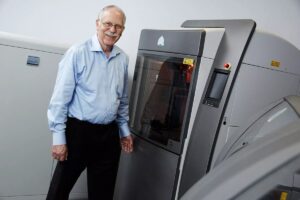
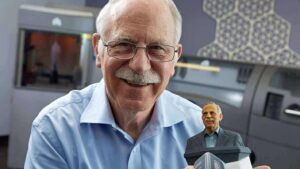
The 1990’s
The first EOS Stereos system on the market in 1990.
FDM patent registered to Stratasys in 1992.
Solidscape was founded in 1993.
The first commercial stereolithography machines were available for purchase as early as 1992.
Z Corporation obtained an exclusive license from MIT.
Bioprinting had its start when stereolithography was invented in the early 1980s and in 1999 Wake Forest built the first bioprinted scaffolding for a human bladder.
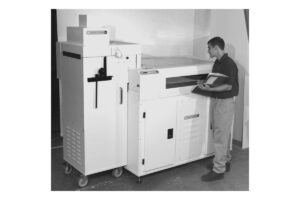
The 2000’s
A 3D printed working kidney was created in 2000 but It wasn’t transplanted into a patient until 2013.
MCP Technologies (an established vacuum casting OEM) introduced the SLM technology in 2000.
Z Corp launched the Spectrum Z510, the first high-definition color 3D printer, in 2005.
The first 3D printed prosthetic limb was printed in 2008 and incorporated all parts of a biological limb – no assembly required.
FDM patents expired and become available in the public domain in 2009 which opened innovation in the 3D printing industry. Desktop 3D printers dropped in price and this technology became more accessible.
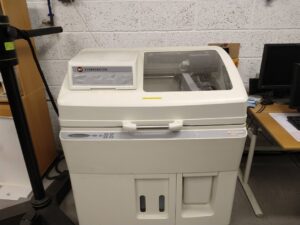
The 2010’s
The first personal 3D printers were sold in 2010.
Also in 2010, Urbee was the first 3D printed prototype car. Its body was fully 3D printed by a large-scale 3D printer.
Cornell University began building 3D food printer.
The CLIP technology was introduced for the first time in February 2014 and its inventors (Joseph M. DeSimone, Alexander Ermoshkin, Nikita Ermoshkin, and Edward T. Samulski) filled the two first patents.
First 3D printer sent to space by NASA to make the first 3D printed object off of the earth in 2014.
Professor Daniel Kelly and his team from the Advanced Materials and Bioengineering Research Centre (AMBER) of Trinity college in Dublin, announces they’re able to 3D print bone and cartilage in 2016.
In 2016, WhiteClouds filed for a patent for the first medical three-dimensional Hinge and Slice model.
From there, the 3D printing technology has evolved and now we have the ability to 3D print tissue using stem cells.
There are even 3D printers like the Mcor Arke, that build full-color paper models which are eco-friendly and bio-degradable. This model uses water-based adhesives and inks in the printing process and you can recycle the unused paper. If you want to make the object more durable, it can be dipped in resin. As it cures, it becomes as strong as the material it’s been dipped in – like a hammer that really hammers a nail.
